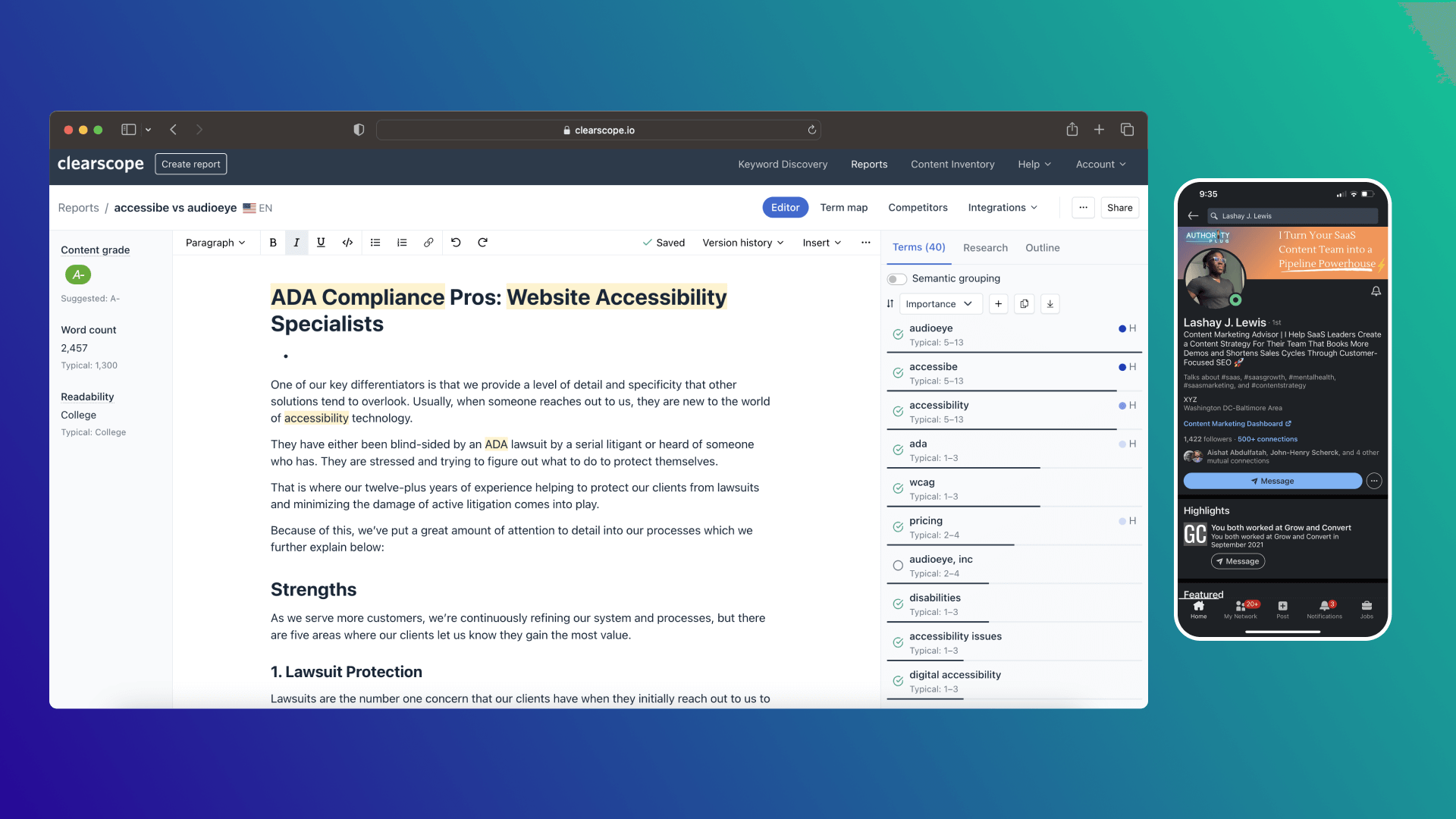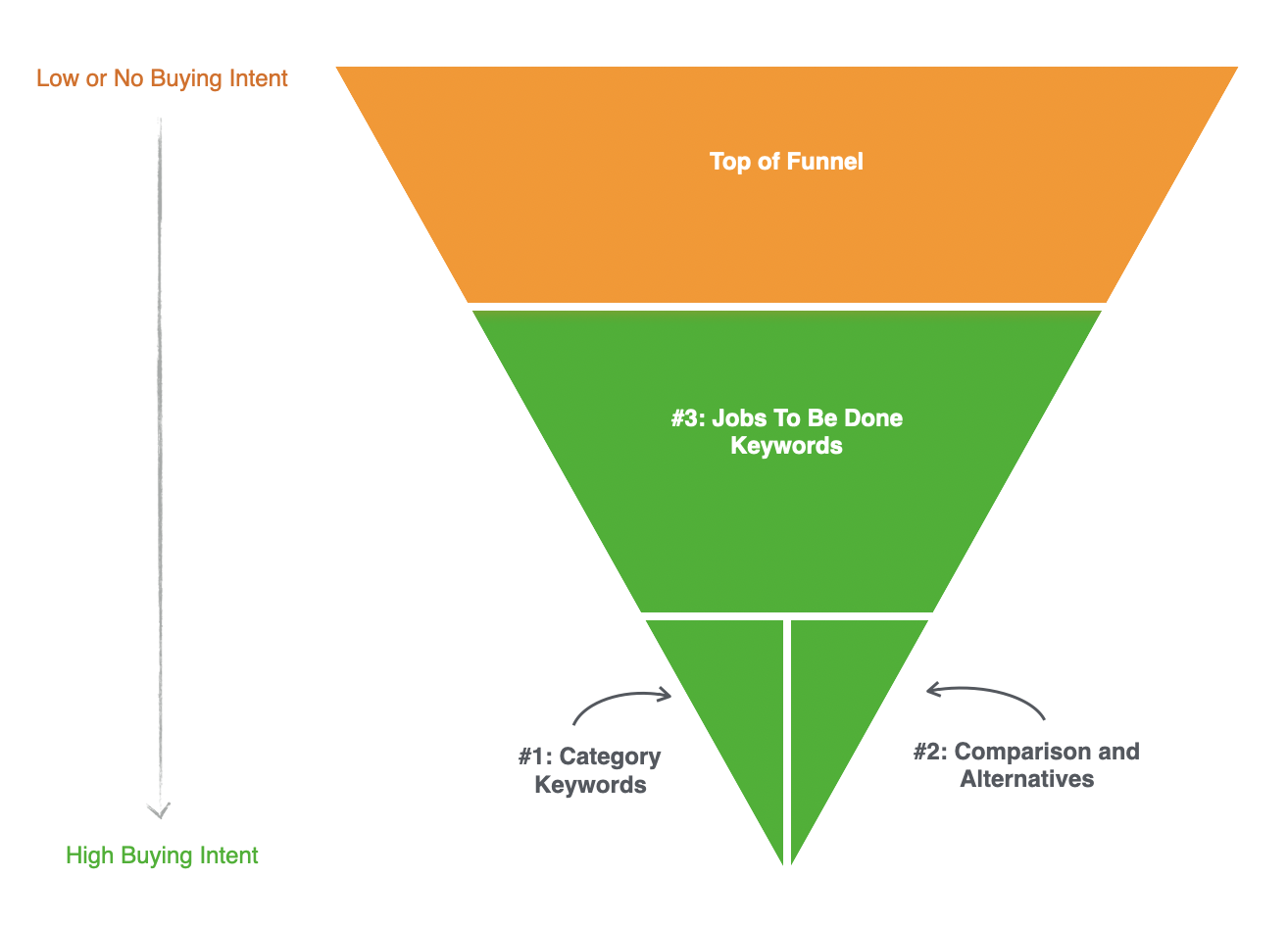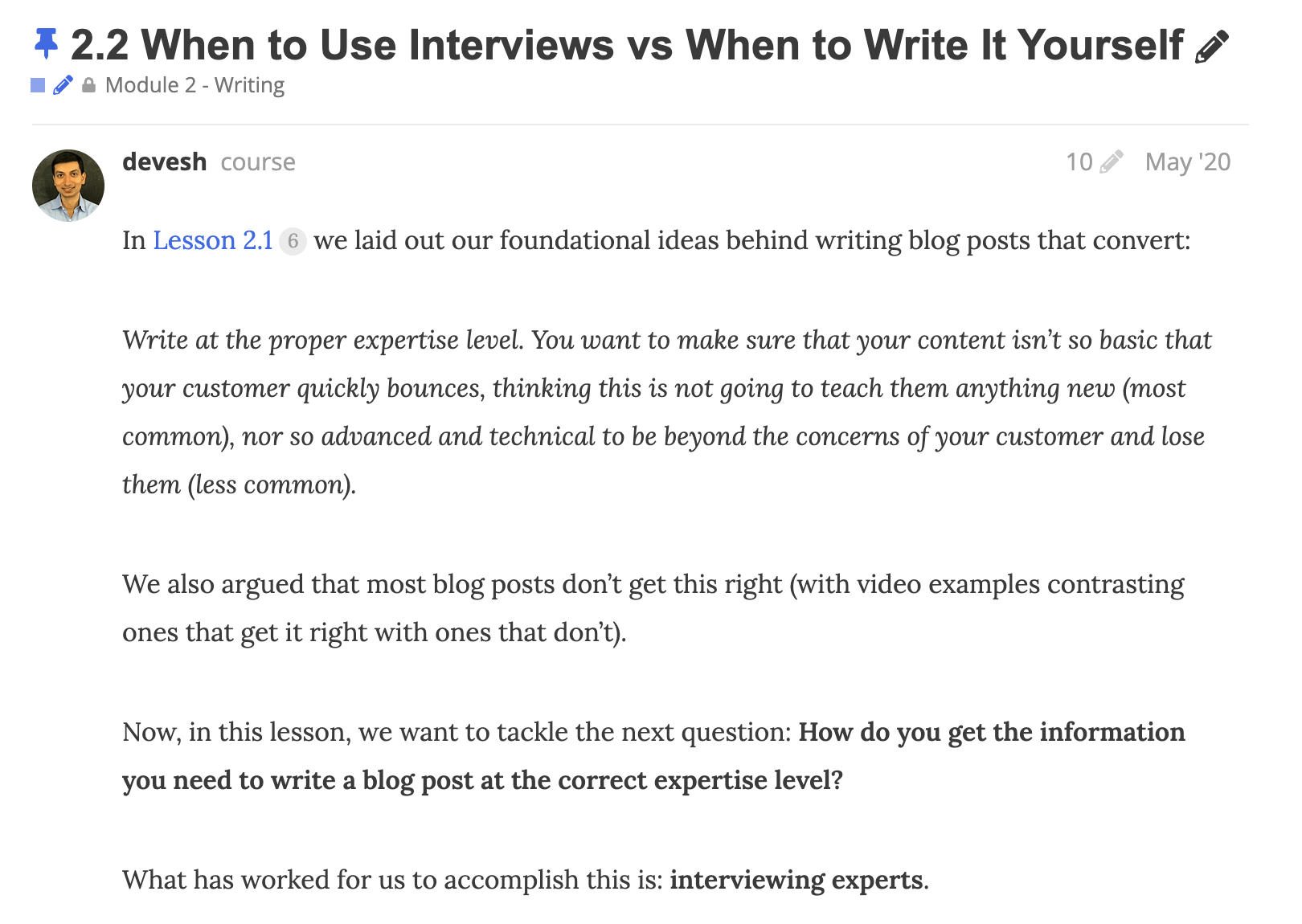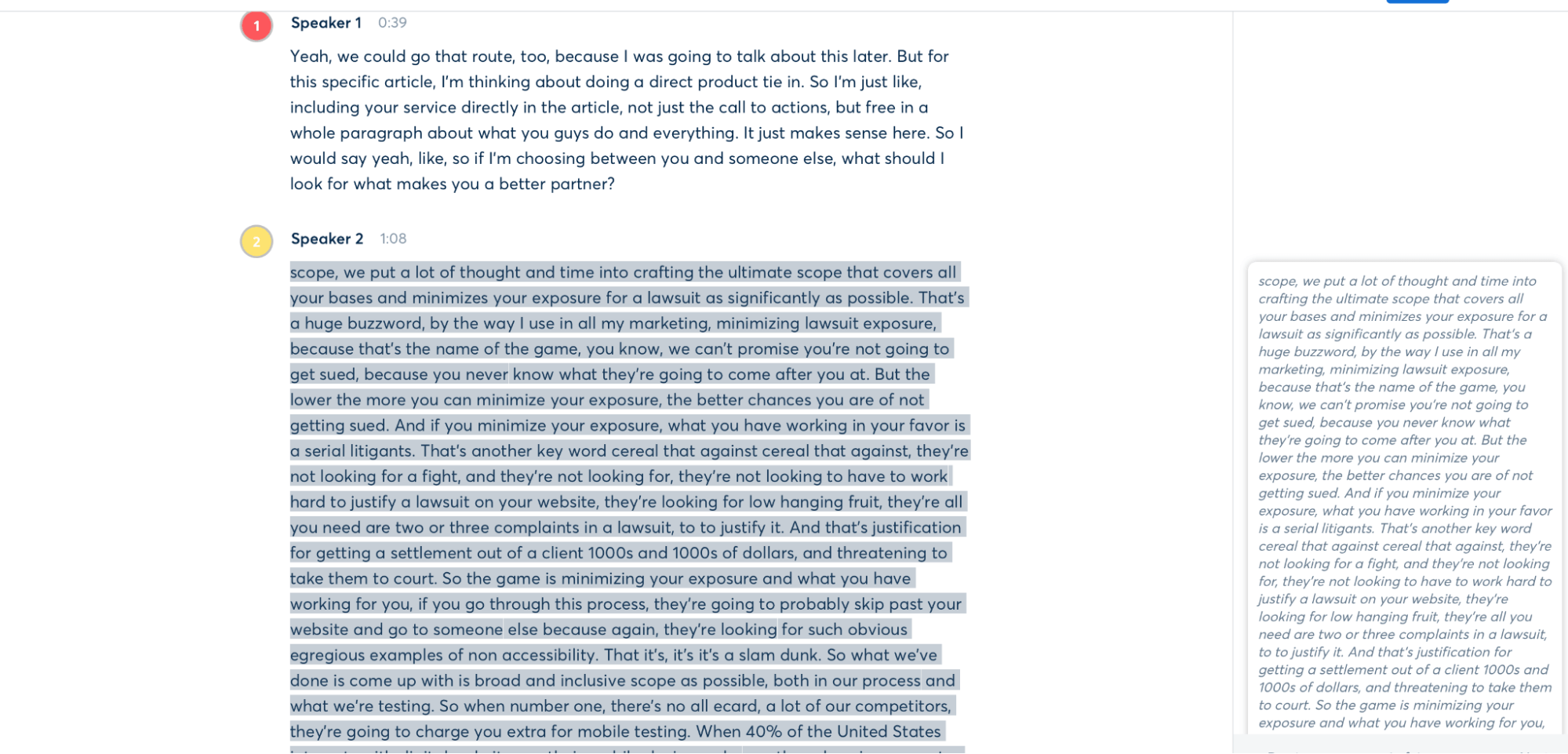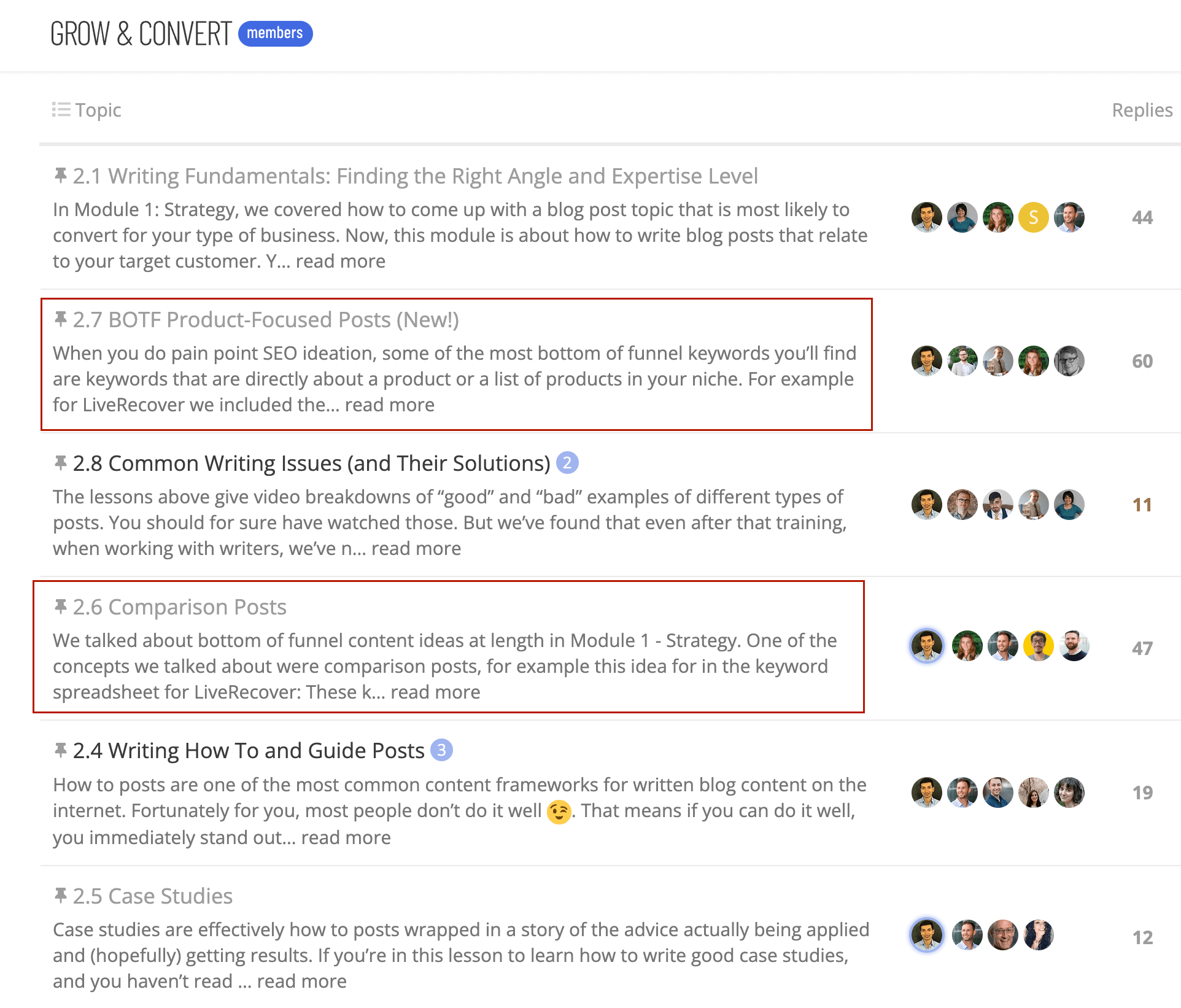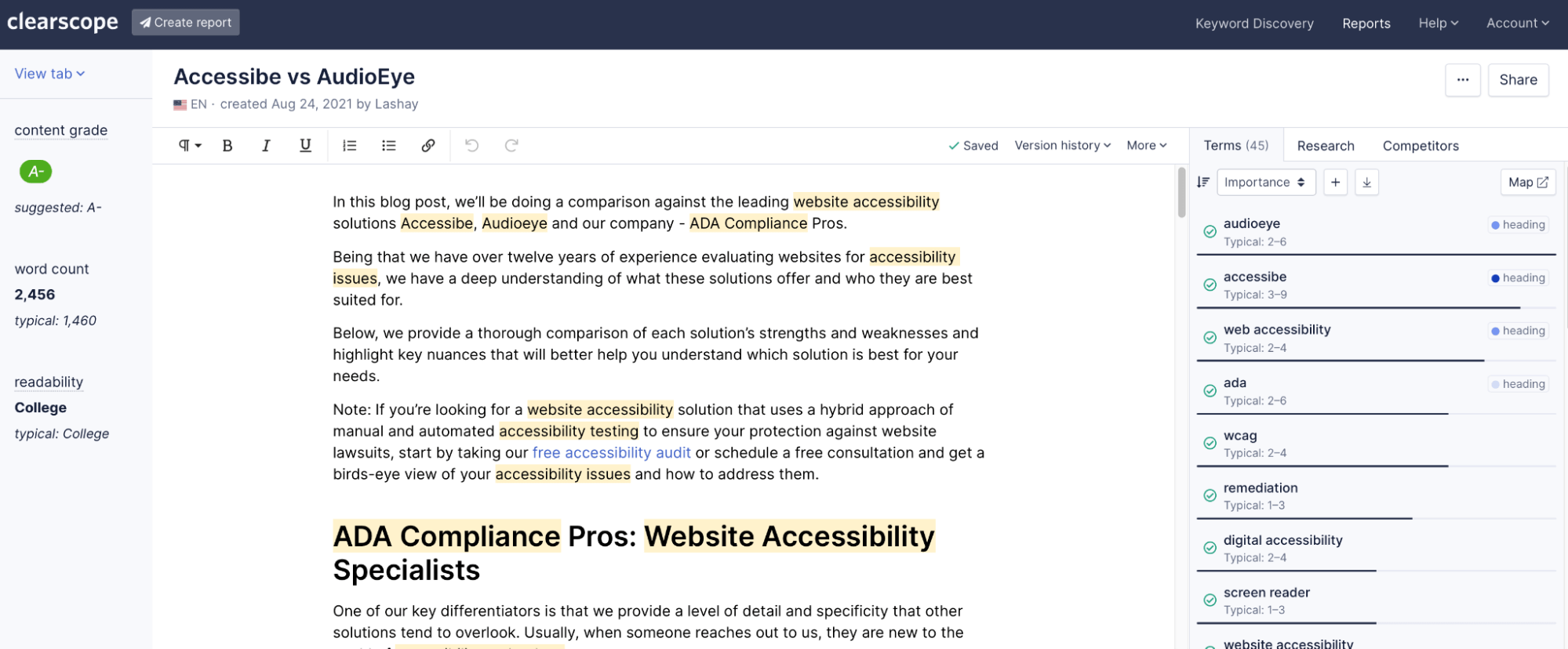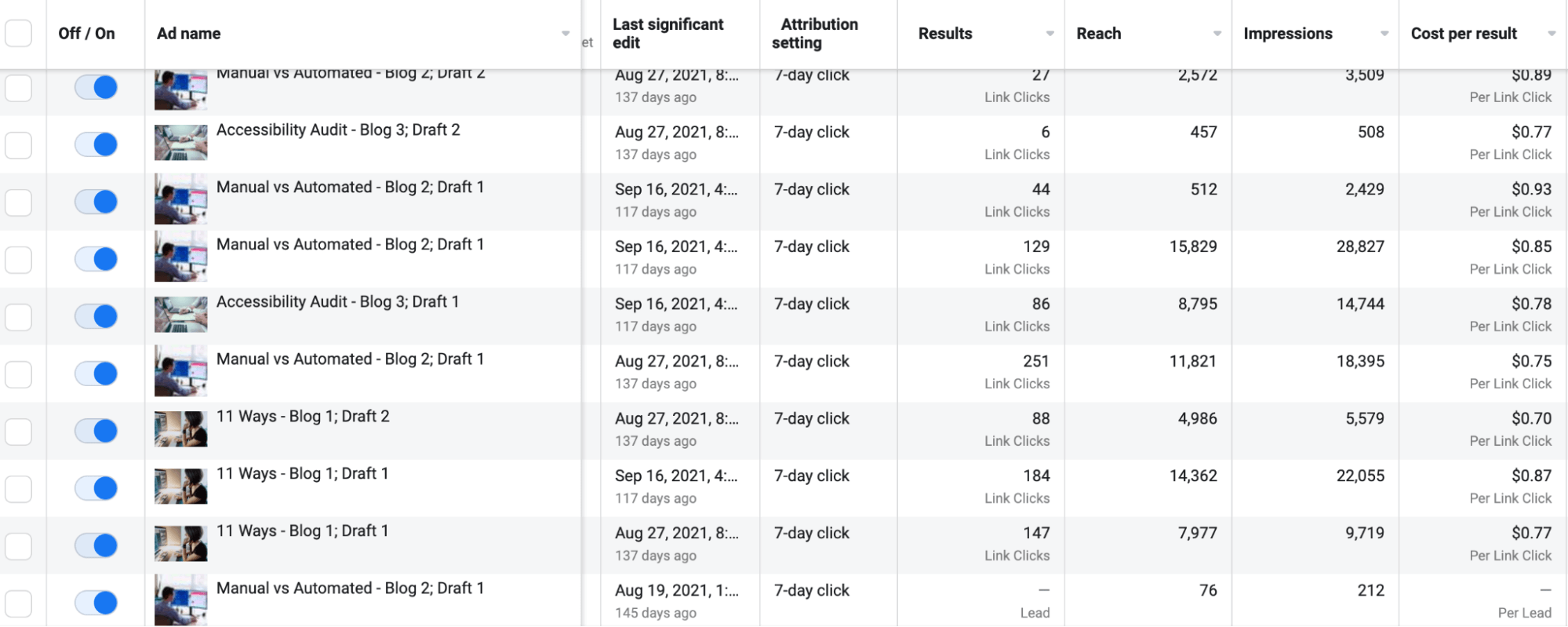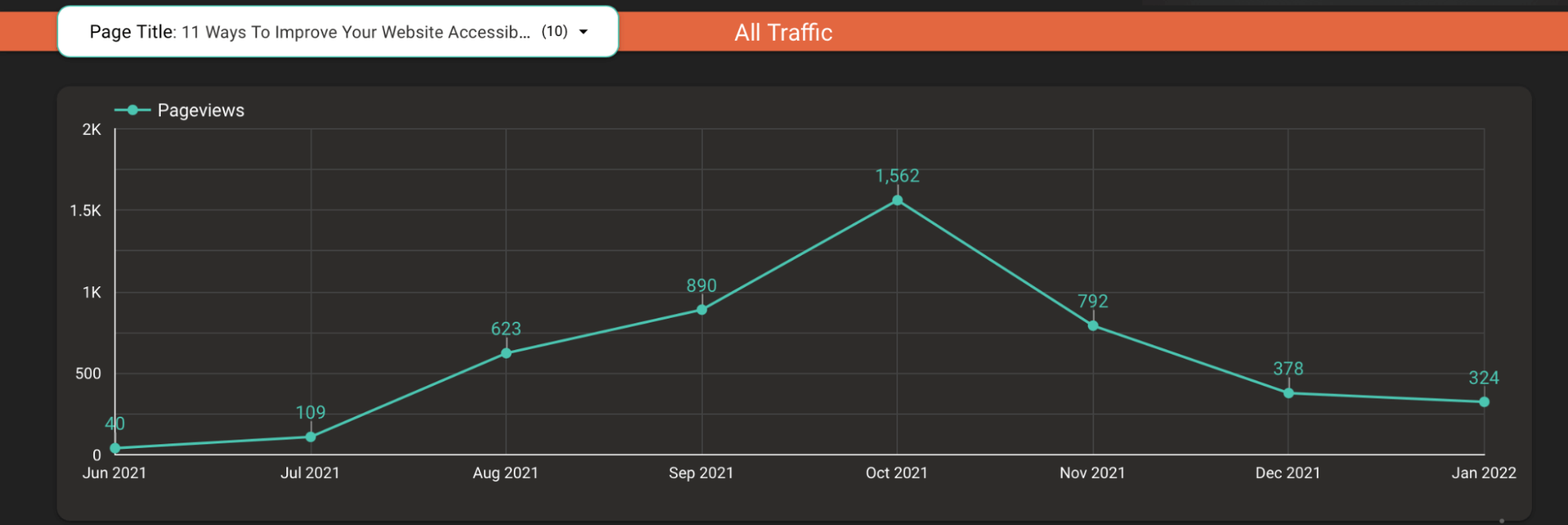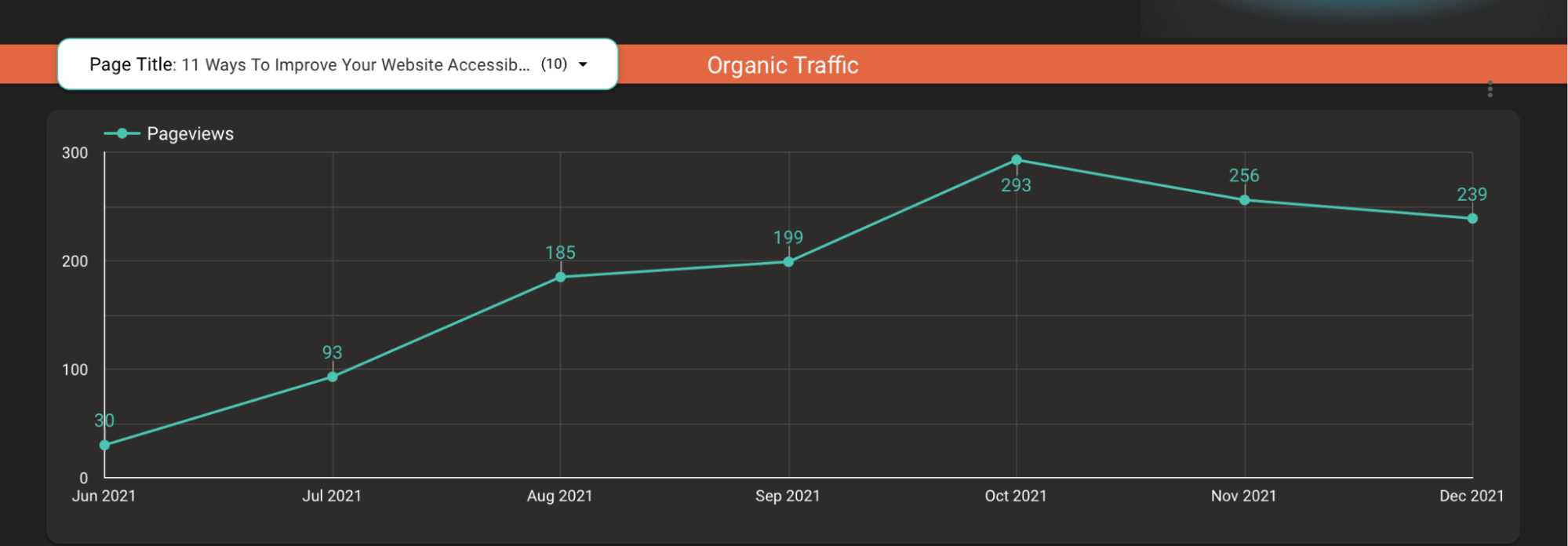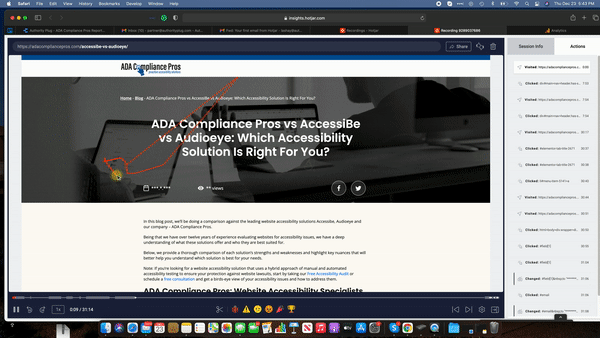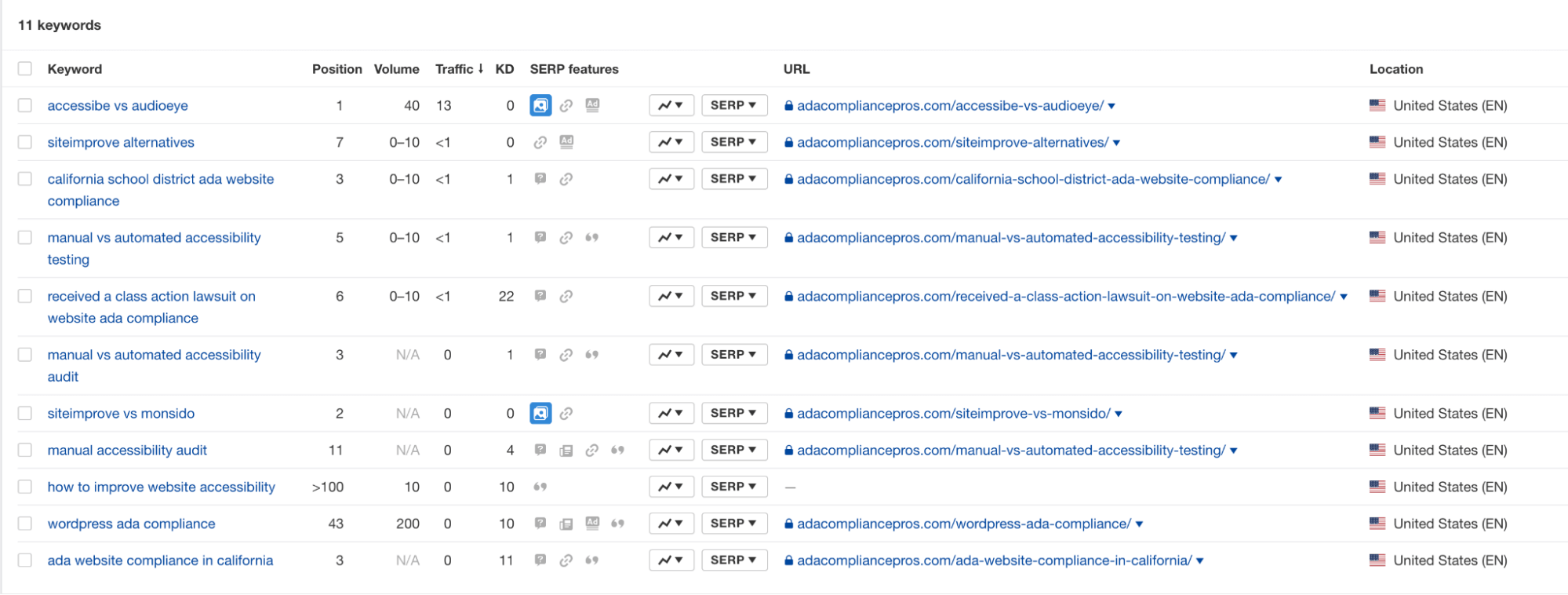Note from Devesh: This is a case study from Lashay Lewis — who is in our course and community — about how she applied the strategies taught in our course to generate leads for her client with content.
In 2021, I had the opportunity to work with ADA Compliance Pros (ADACP) — a company that helps businesses ensure their website is accessible to users with disabilities.
The challenge with doing content marketing for this client was that the website compliance part of their offering was brand new. Historically they had only helped businesses become ADA (American Disabilities Act) compliant for their brick and mortar stores and offices (ramps, railings, etc.).
Because website compliance was a new offering, the positioning, messaging, and exact value propositions were all still being worked out. So, there was no guarantee that organic traffic via content marketing would generate leads and customers for this new offering. But, because they had gotten a few organic leads for website compliance, I decided it was enough to give this campaign a try. Their goal was to get consistent inbound leads from their blog for the new website compliance service.
By using bottom-of-funnel SEO and content principles from the Grow and Convert (G&C) course, I was able to produce some great results. In just four months, I helped ADACP go from no blog leads generated for their new service to 5 -15 leads per month from their blog for the new service — with an average order value of over $1,000.
In this article, I’m going to talk about how I did this by following the G&C course methodology.
Understanding the Target Audience Using a Kickoff Call and Structured Interviews Taught in the G&C Course
I had never worked in this industry before and didn’t know too much about it. What I did know was that in order to find keywords (and create content) that speak to your audience you have to truly know their pain points and what they’re going through.
This was pivotal to the success of the campaign and was demonstrated step-by-step in the G&C course. I learned multiple methods on how to find the pain points a business solves through deep customer research. I also learned how to connect those pain points to high-converting keywords that their target audience is searching for. (I’ll get more in-depth with the keyword strategy below.)
However, in order to understand these pain points, I needed to understand who the customer was. In order to get a better understanding of exactly who needed their service, we had multiple Zoom calls where I used the G&C interview methodology and asked questions like:
- What were some of your largest deals closed in the last year?
- What is the most common job title of someone buying the service?
- What were some of the most common reasons someone decided to buy your service?
- Who do you view as your “best customers”?
The answers to these questions gave me much more insight than I originally had and helped me better understand the type of people we need to be selling to. After the interviews, we found out that their target audience was more than likely IT professionals at midsize to large businesses who had received a lawsuit due to not having a compliant website for disabled users.
Now that we knew who we were targeting, we needed to find out what their specific pain points were.
Discovering the Customer’s Pain Points to Effectively Craft a Content Marketing Strategy
In addition to the questions above related to finding the target audience, the G&C course also teaches specific questions to find out what the customer’s pain points are. Questions like:
- What do customers say was the primary benefit of your service?
- What problem were customers trying to solve when they initially came across your service?
- What would clients use as an alternative if your product was no longer available?
- How would your customers feel if they could no longer use your service?
(These are also amazing questions to ask your customer base directly, if you can.)
With these questions, I ended up with a pretty good idea of not only the customer’s pain points, but also what their value propositions were against competitors that were offering similar services.
Using What I Learned about Pain Points to Find Bottom-of-the-Funnel High Converting Keywords
The next step in the G&C process is to take everything I learned in the interviews and connect them to high-converting search terms. As anyone who reads G&C’s blog knows, they prioritize bottom-of-the-funnel (BOTF) keywords because these keywords convert much quicker than top-of-the-funnel (TOTF) keywords — a la Pain Point SEO.
This is because if someone is searching for BOTF keywords, they are already mentally further down the sales cycle and ready to make a purchase decision than someone searching for TOTF terms only loosely related to your product area.
To do keyword research (my absolute favorite part of the content marketing process), I first went through the website to see if I could find specific words that described what the service offering was. This would help me find the category keywords like “best products or lists”.
In addition, I also put a focus on comparison or alternative keywords, where the searcher was looking to compare two or more products. These are the two most BOTF keyword frameworks outlined in Pain Point SEO:
The BOTF content frameworks discussed here. I focused on the top three early on in the engagement.
After some research I came up with quite a few topics but decided to narrow it down to three for the first month:
- Manual vs automated accessibility testing
- Manual accessibility audit
- WordPress ADA compliance
These three topics either directly described what the client was offering or showed that the searcher was looking to compare different options — which shows they are towards the end of the buying cycle.
I also did a Google search for each of these terms to see what others were writing about. This let me strategize how I could make these pieces more useful for the reader as opposed to just regurgitating information that’s already out there, which G&C refers to as “mirage content”.
But that leaves the question, if I’m not using the top 10 search results to gather my information for these blog posts, where am I getting the information from?
Using Subject Matter Interviews to Create Expert-Level Content
I believe one of the reasons that companies choose to approach TOTF keywords is because it doesn’t require a knowledgeable expert to write the content. This is because people searching for TOTF content are usually beginners in the topic, which means companies can hire an average skilled freelance writer to compile information from the top 10 results and regurgitate it.
This often works for ranking for TOTF terms (although I feel like you should still be teaching the reader something new regardless of whether it’s TOTF content or not). But, when you are writing bottom-of-funnel content, it requires expertise in both the topic and the company because the searcher already knows a decent amount of information on the topic — hence they are searching for a solution to their problem.
In addition, the searcher is looking for in-depth information on how different products or solutions compare, so you need to understand how the client’s product stacks up to competition in detail. If you don’t have expert-level knowledge in this product-space or, in other words, can’t let the reader know that you understand their pain points and have the answer for them, they’ll leave your article in a hurry.
I was by no means a subject matter expert in website accessibility when I started this engagement. But my client, David, was. The G&C course teaches the exact framework on how to conduct subject matter expert interviews for the chosen content topics to really immerse yourself into the industry, gain an in-depth understanding of why people need your (or your client’s) service, and properly convey that through written text.
During our interviews, we’d talk about the target keyword and the angle that we felt would be best for the keyword. What I love about interviews is that it gives me an opportunity to learn more about the target audience and it really drives unique and clear writing.
After the interview I would use otter.ai to transcribe the interview, re-listen to it (and/or read through it), and methodically put the ideas together in a way that captures the company’s voice and displays expertise through the writing.
Creating the Content
While I could have outsourced the writing, I decided to take on the challenge of content creation myself because I really wanted to exercise what I had learned in the course and start to embed the Grow and Convert methodologies into my process.
I would begin by filling out the “G&C SEO Questionnaire”, which is described and shared in the course.
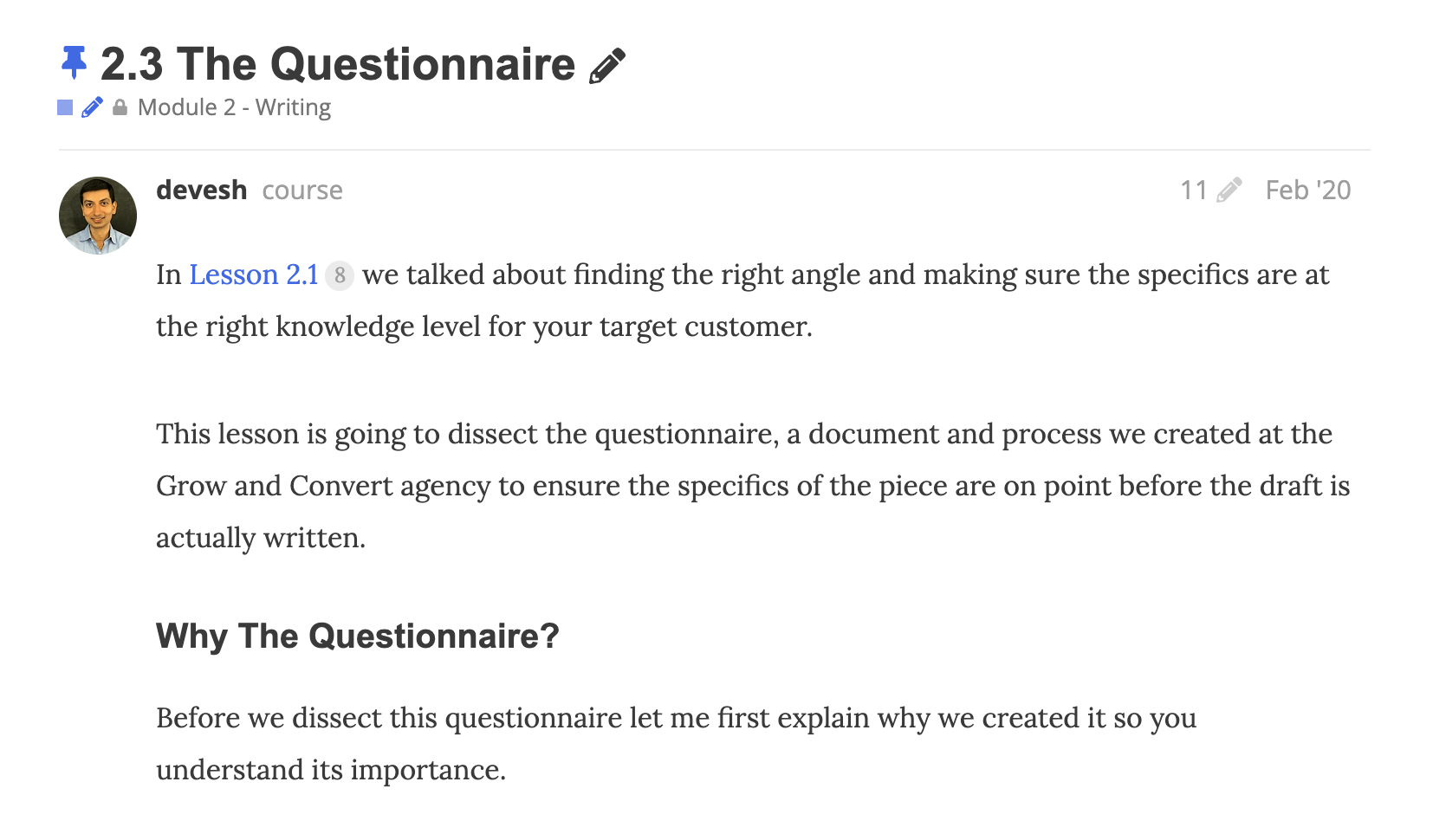
The outline helped me think through the different points I wanted to make, cut through jargon, and get down to the content that was actually helpful for the reader and could have an impact on whether a reader decided they wanted a free audit for their website.
After I had the outline completed, I would then begin to expand on that outline by backing up claims with facts, giving real life examples, and touching on the pain points that really mattered to this audience — all the points that are taught in Module 2 of the Grow and Convert course.
In particular, there are specific lessons showing examples of how to write the types of blog posts I’d honed in on for this client.
After the content was written, I used Clearscope.io to make sure the content was optimized for ranking.
I always try to aim for an “A+” rating without changing the context of the article. I purposely choose to write the article before using Clearscope as opposed to creating the report first and then attempt to optimize while I’m writing. The reason being, that my goal is to always write content for the end user in mind without trying to forcibly place keywords throughout the content just to reach a certain grade within the tool. Creating the content first allows for me to think through which points I’d like to make with no pressure of where I should place keywords.
Content Distribution
Benji and Devesh always stress the importance of having a content distribution strategy for a few reasons:
- It speeds up the process of traffic coming to the site.
- It allows you to see which pieces of content are more likely to convert through organic traffic.
- Creates engagement which Google likes.
After the content was optimized and uploaded, I immediately began a content distribution strategy which consisted of running Facebook Ads to the articles. Audience targeting on Facebook consisted of going back through the answers of the customer research questions that were asked during the kickoff call and using those answers to target our ideal customer by job title and interests. We needed to test which of those audiences produced the most engagement and, more importantly, conversions.
Every month, I would run ads to three new articles. And, based on whether they would convert or not, I would decide whether to continue running ads to that article or test a new article.
As we continued running the ads, we started to see good engagement with click costs as low as $0.70 per click.
As a result of the Facebook campaign, traffic and pageviews to the articles started to increase.
Traffic and Conversion Results from the Content Creation
Different clients have different goals. Some clients want to see traffic grow while others are solely focused on getting new leads from their content marketing efforts. This client in particular was not concerned with how much traffic grew (at least not in the beginning); he was more concerned with how well this new content could bring in highly qualified leads.
I mention this because the G&C methodology teaches us to focus on keywords that will drive converting visitors vs. keywords that will bring the most traffic. This resulted in leads being generated from the content much sooner than it would have if I would have just focused on keywords with a high search volume.
Traffic (both paid and organic) started to grow from my articles from the first month (June) with the peak being in October. While these numbers took a few months to even hit over a thousand, take note that this is a very specific niche and the articles we were targeting were not necessarily the story based or case study style articles that drive a ton of engagement on social media.
Traffic started to decline after October because we began to slow down on paid ads since organic traffic started to pick up. Notice when the decline starts on all traffic, the increase starts with organic traffic, shown below.
Soon after the increase in traffic, conversions started to follow.
This screenshot shows results from the Model Comparison Tool in Google Analytics and is filtered to look at organic conversions over the past 30 days.
For this particular client, a conversion was defined as a user who submitted their email and website for a free compliance audit report.
Beyond the G&C Course: My Method of Observing On-Page Behavior of Leads via Hotjar
I also used Hotjar to view screen recordings of visitors who viewed the articles I wrote and then requested a free audit.
Although this specific strategy was not taught in the course, the framework that the G&C course teaches leaves you wanting to understand your audience on a deeper level.
The reason I decided to view recorded user sessions was to gain a deeper understanding of what visitors would do when they landed on one of my articles. Which CTA would they click? How much of the article would they read before they started skimming? Were they clicking on inner links and going to other articles? Were there any distracting elements taking their focus off the article?
With this information, I’d have an idea of what improvements needed to be made to increase the conversion rate from an article.
Were they quickly bouncing? Write a better intro. Were they scrolling past the article CTA’s? Maybe place them in a different area or make them more noticeable.
What I noticed from the recordings was that the user would spend anywhere from 1-3 minutes on an article before going straight to requesting a free compliance audit.
Rarely did I see a user navigating the entire site before making a decision.
This proved once again that BOTF keywords should be first priority in your content marketing campaign.
SEO Rankings
At the time of writing, there are 8 articles ranking on the first page.
I also want to mention that despite the low search volume that Ahrefs displays, we were still getting conversions from the same keywords that were displaying “N/A” and had low search volume.
G&C’s post on mini-volume keywords goes in-depth on why choosing low volume search terms makes sense if there’s high-buying intent.
This screenshot shows how the “siteimprove vs monsido” article drove in 2 conversions and the “accessible vs audioeye” article drove in 1 conversion.
There was a lot of low hanging fruit and this was because the site’s domain authority was relatively strong (42) so we were able to rank for our target keywords in a reasonable amount of time (~4 months). Although the previous content written for the blog was not written with the intention to convert visitors into leads, it was able to help the site establish some authority over time.
There were a few other competitors in the space targeting some of these BOTF terms but they were mostly software companies. That meant our advantage with these articles could be taking a contrarian opinion — ADA Compliance Pros does the same thing as the software, they just add a human touch. The advantage of having part of the process done manually is that there’s a higher chance that all errors will be caught (meaning a lower chance of your website being sued by serial litigators, due to not being ADA compliant).
Targeting Local Terms
Before ADACP started doing website audits, they already had over a decade of experience with serving local businesses in California and ensuring their establishment was compliant for those with disabilities.
This client had earlier expressed interest in local targeting for their new service, so from there I did keyword research to see which high-intent local articles we could find and it turned out to be one of the highest converting articles we have to date.
Conclusion
A 2023 update: As a result of content marketing, this client is now closing enterprise contracts.
Grow and Convert was the course I needed to catapult me from being a content writer into a content leader. Everything from the monthly Q&A calls to the extra time they spent with me making sure I understood the concepts they taught.
I believe one of the biggest differentiators that makes their course better than most content marketing courses is that they use live case studies in their teaching. No hypothetical scenarios, just real clients with real results.
Lashay Lewis is a content marketing advisor based in Maryland. You can get in touch with her on LinkedIn or through her content marketing consultancy website.
More About Grow and Convert
- You can learn more about our course here.
- If you want to have Grow and Convert help your company, you can learn about our SEO and content service here.
- We also offer a similar conversion-focused service for paid search.
- If you’re a writer or marketer wanting to work at G&C, you can learn more and apply here.

